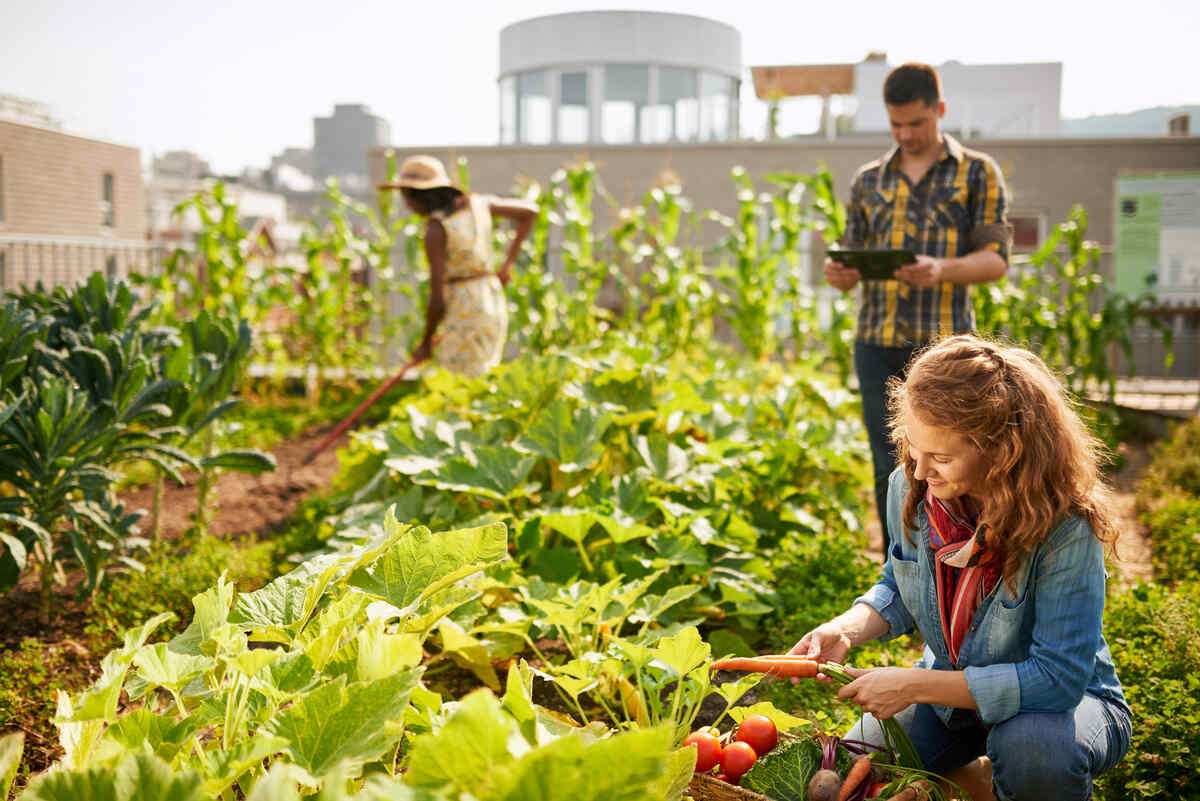City Blooming - The Facts
City Blooming - The Facts
Blog Article
10 Easy Facts About City Blooming Shown
Table of ContentsThe 4-Minute Rule for City BloomingNot known Incorrect Statements About City Blooming 9 Easy Facts About City Blooming ExplainedThe City Blooming DiariesAn Unbiased View of City Blooming
Intrigued in growing food available for sale in the City of Chicago? Considering beginning an area garden? Modifications to the Chicago Zoning Statute permit agricultural usages like area gardens and urban ranches in numerous components of the city. Below is a listing of regularly asked concerns concerning the rules and laws that growers should consider when preparing a metropolitan farming task.
The zoning modification does not customize any type of other codes managing composting, structure licenses, purchasing or leasing City possessed building, company licenses or ecological contamination. There are existing codes that control these issues and they stay completely result and may be applicable to your job. Neighborhood gardens are usually had or handled by public entities, public organizations or community-based companies and kept by volunteers.
Urban farms grow food that is intended to be offered, either on a nonprofit or for-profit basis. As a result of their industrial function, city ranches need a service certificate. Yes. A community garden is enabled to market surplus create that was grown on site if the sales are accessory or subservient to the garden's key purpose defined above.
Not known Details About City Blooming
The quantity of compost material can not go beyond 25 cubic yards at any kind of provided time according to the criteria in 7-28-715 of the City's Municipal Code. Due to the fact that the dirt at a lot of brand-new garden websites requires modifying, garden compost, dirt, wood chips, or other products can be obtained to create or improve the growing room.

If a building authorization is called for then the hoophouse will be thought about an accessory building. You can learn more regarding the building license needs by speaking to the Division of Buildings. The 25,000-square-foot size limit is meant to stop a solitary neighborhood yard from controling a provided block or interfering with the block's existing domestic or commercial personality.
The limitation does not apply to yards found in Public Open Space (POS) districts. Can there be more than one neighborhood garden that is 25,000 square feet on a solitary block? Fencing is not called for, however, yards that have large car parking locations may be needed more information to set up secure fencing or other landscaping functions.
The smart Trick of City Blooming That Nobody is Discussing
B1 & B2 districts need that all business usage tasks be performed inside. R areas limit industrial activity. The policies show the purpose and intent of the Zoning Code. Is fence required for urban farms? Yes. Fences might be called for, in addition to landscape design and testing, for sure car park locations and outside job or storage space locations relying on place and the certain activity occurring.
Yes. Urban farms need structure authorizations and zoning approvals before construction. Various other kinds of city review may be called for relying on certain frameworks, activities, size, landscape design, licensing, public health and stormwater management concerns. Most of these demands are determined in the project design or allowing procedure, nonetheless, the candidate may be accountable to separately identify specific licenses or allows that might be called for.
The Division of Business Matters and Consumer Security can help identify the particular kind of business license that's required. Off street car parking is needed for a lot of industrial jobs in Chicago. The called for number of parking spaces is based on the number of staff members working on website and not the square footage of the growing space.
What Does City Blooming Do?

Yes. An urban ranch can offer garden compost material created on website, nonetheless, the operation has to conform with the regulations in 7-28-715 of the Chicago Municipal Code. Yes. Aquaponic systems are permitted indoors on metropolitan ranches in several zoning areas. However, a zoning evaluation and structure permit is needed in order to install structures or systems and a business certificate is required as described above.
Approximately five hives or nests of honey may be kept as an accessory usage. Beekeepers need to register with the Illinois Department of Farming. For more details regarding the suggested zoning amendment you might call the Department of Housing and Economic Growth, Bureau of Preparation and Zoning at 312.744.8563.
, which takes area in rural areas at the edge of suburbs.
8 Easy Facts About City Blooming Explained
It can include a motion of natural cultivators, "foodies" and "locavores", that look for to develop socials media based on a shared principles of nature and community holism. These networks can create using formal institutional assistance, ending up being integrated right into neighborhood town as a "change community" motion for sustainable metropolitan development.
In either instance, the more straight accessibility to fresh vegetable, fruit, and meat items that might be become aware via city farming can boost food security and food safety while decreasing food miles, bring about lower greenhouse gas emissions, thereby contributing to environment change mitigation. Several of the first evidence of metropolitan farming originates from Mesopotamia.
Report this page